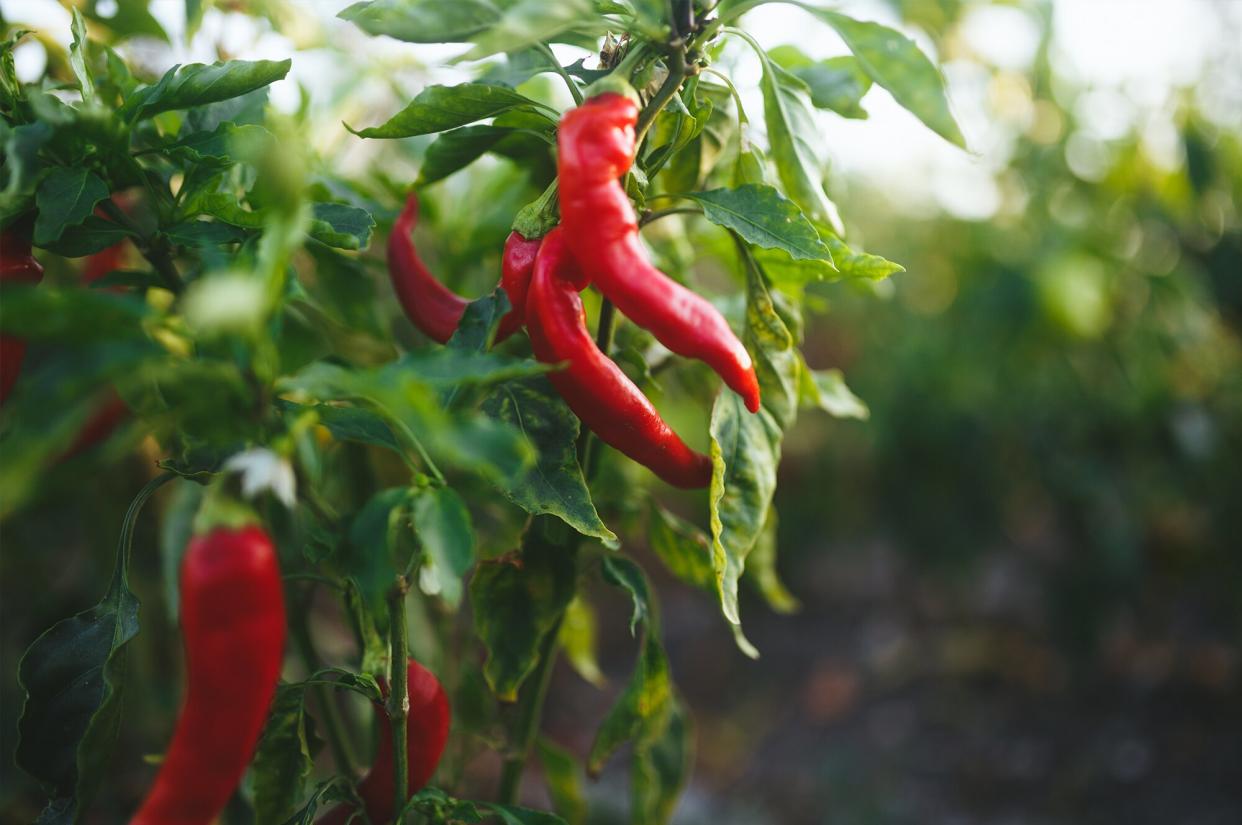How to Grow Hot Peppers and Ensure a Bountiful Harvest

Getty Images
Hot peppers are members of the nightshade (Solanaceae) family, which means they are a not-so-distant relative of tomatoes, potatoes, and eggplants (and, of course, other types of peppers). That might be hard to believe when you're noshing on one and it adds a sheen of sweat to your forehead, but it's true, says Jacob Keszey, director of farm and land at Earthkeep Farmcommon, a regenerative agriculture collective in Vermont.
Not only are hot peppers used to add flavor to food all over the world, they're also pretty good for you. "Research suggests that capsaicin, the active component in hot peppers, boasts a long list of medicinal and physiological properties, including being a powerful antibacterial and antimicrobial compound," Keszey says. To reap these benefits (and add a little kick to your next recipe), follow these tips for the best homegrown hot peppers.
Related: Why Does the Oil from Jalapeños and Other Chiles Burn Your Hands? Plus, How to Stop It
How to Grow Hot Peppers
Plant in Well-Drained Soil and Full Sun
You want to make sure you're helping your pepper plants succeed by planting them in the right location. "Hot pepper plants like ample sunshine and fertile soil that drains well," says Keszey. "Amending the soil with quality-aged compost will boost the levels of potassium, phosphorus, and calcium—all of which are important for success with hot peppers."
Keszey says he's seen some success with giving his peppers a little space to stretch out. "At Earthkeep Farmcommon in Charlotte, Vt., we plant our hot peppers about 18 inches apart," he says. "In wet climates like ours, plenty of air flow around each plant can reduce disease pressure."
Fertilize and Water
For the best results, you should keep the soil full of nutrients by fertilizing it and keeping it well hydrated. "Pepper plants appreciate moist soil and regular watering," Keszey says. "Watering more at once, but a little less often, can help draw roots deeper into the soil where they can access more water and nutrition."
Apply Mulch
Additionally, adding a layer of mulch under your peppers can help keep them from getting too thirsty between watering. "We like to mulch the soil under our pepper plants to conserve moisture, stabilize soil temperature, add organic matter, and for weed control," Keszey says. "Oat or wheat straw is best, but use whatever you can find."
How to Prevent Blossom-End Rot in Hot Peppers
Blossom-end rot is a common issue with peppers and tomatoes, and stems from a calcium imbalance, according to Keszey. Vegetables dealing with this problem will fail to develop normally and may look wilted or shriveled beginning at one end. "Spreading wood ash in the soil or watering plants with eggshell tea can help correct these soil deficiencies and set your hot pepper plants back on track."
As you can see, growing hot peppers can be an easy task with the right tools and know-how. Which means you could end up with a quite a bounty by the end of the season. If that's the case, Keszey suggests preserving the ones that you don't eat right away in whichever method you prefer—making hot sauce and pickled peppers are both fan favorites. You're only limited by your imagination (and just how much heat you can handle).

